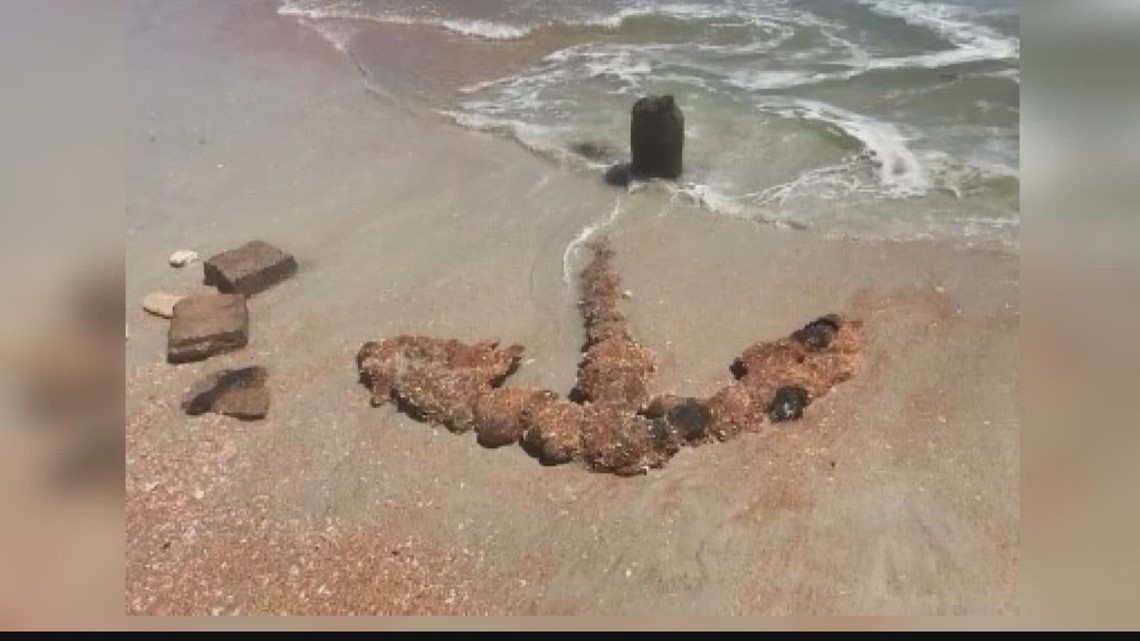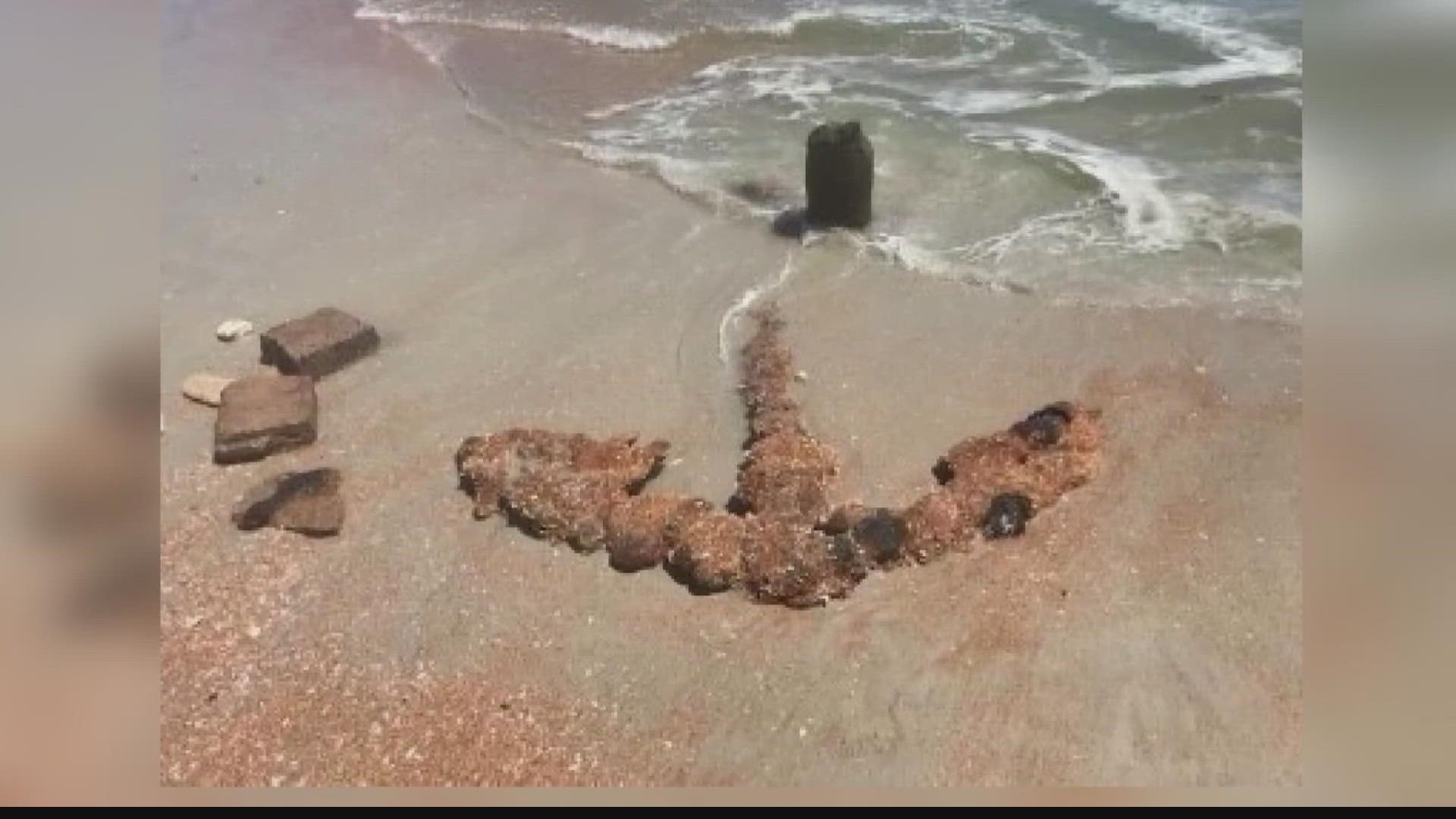FLAGLER BEACH, Fla. — "We were coming from body surfing one day."
Nick Mongelli of Flagler Beach remembers the moment when he first saw a large, old anchor on the beach.
"One of the kids leaned over and said, ‘look at this coquina rock,' and we discovered it was in the shape of an anchor," Mongelli nodded.
That was a few days ago. Wednesday, marine archaeologists were on site in Flagler Beach to investigate.
"We’re not 100 percent sure how it got here," Marine Archaeologist Airielle Cathers of the Lighthouse Archaeological Maritime Program said.
Flagler Beach has seen sudden and drastic erosion in the last two weeks.
"Probably 9 to 10 feet that was completely washed away," Cathers said. "And it has now exposed the anchor."
Days ago, much more of the anchor was visible above the sand, but slowly the sand is washing back in, covering up much of the anchor by Wednesday.
Archaeological Conservator Dorothy Rowland said, "The nice thing about the sand is that it helps preserve the anchor. It's great for the anchor. For what we’re trying to do it’s not super, great because we’re trying to get measurements and determine its age."
The anchor measures a little more than eight feet long and about five feet wide.
Archeologists believed it dates to the 1800s.


As for the rest of the ship? It’s probably not here.
Rowland said, "Usually when you find an anchor, you’re not necessary finding a ship."
Cathers noted, "If a ship gets caught and the ship is anchored, they’re just going to chop the anchor and leave. They’re not going to try to haul it up. Especially if a hurricane is coming."
This anchor will remain on the beach, covered up again by sand, while archaeologist study the data collected.
Mongelli smiled, "I like seeing the history of it. We allow ant to learn a little history about what happened before we were here. "

